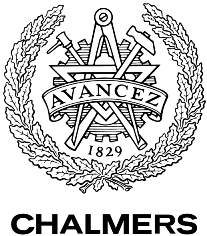Team:Chalmers-Gothenburg/Results
From 2012.igem.org
(Difference between revisions)
m (→Survival of yeast in urine) |
m (→Deletion of CWP2 gene) |
||
| Line 76: | Line 76: | ||
<!--'''Gene Deletion''' | <!--'''Gene Deletion''' | ||
| - | One task of our iGEM project was the deletion of the ''CWP2'' gene, which is encoding a cell wall mannoprotein. By removing it, we aimed for higher cell wall permeability and thus | + | One task of our iGEM project was the deletion of the ''CWP2'' gene, which is encoding a cell wall mannoprotein. By removing it, we aimed for higher cell wall permeability and thus enhanced chances of our ligand hCG to pass the cell wall and to bind to the membrane-bound receptor. |
| - | The gene deletion was performed according to the bipartite method. The results from the first PCR reactions, | + | The gene deletion was performed according to the bipartite method. The results from the first PCR reactions, in which we amplified the overlapping fragments, can be seen in Figure 3. |
| - | [[File:Resultpcr1.jpg|thumb|600px|center|Figure 3: A) A schematic illustration of the first four PCR reactions. The 5' and 3' end of the kanMX (kanamycin resistance) cassette, flanked to loxP sites and available in vectors, | + | [[File:Resultpcr1.jpg|thumb|600px|center|Figure 3: A) A schematic illustration of the first four PCR reactions. The 5' and 3' end of the kanMX (kanamycin resistance) cassette, flanked to loxP sites and available in vectors, were amplified by PCR (PCR reaction 1 and 2). In addition, 500 bp of the up- and downstream sequence of the ''CWP2'' gene were amplified from genomic DNA using primers with 5' extensions that are complement to the loxP sites as indicated with lines above. B) The results of the four PCR reactions on gel. The expected sizes of the kanMX and ''CWP2'' fragments are 1000 bp and 500 bp respectively which correspond to the sizes observed on gel.]] |
| - | The next step was to fuse together the overlapping fragments. The results of the Fusion PCR are shown in Figure 4. | + | The next step was to fuse together the overlapping fragments. The results of the Fusion PCR are shown in the Figure 4. By transforming yeast with these fragments, homologous recombination should occur which will lead to the exchange of the ''CWP2'' gene with the kanMX cassette. |
| - | [[File:Pcr2result.jpg|thumb|600px|center|Figure 4: A schematic illustration of the second step in the bipartite method. The CWP2 upstream fragment | + | [[File:Pcr2result.jpg|thumb|600px|center|Figure 4: A) A schematic illustration of the Fusion PCR, the second step in the bipartite method. The ''CWP2'' upstream fragment was fused with the 5’ end of the kanMX cassette and the ''CWP2'' downstream fragment was fused with the 3’ end of the kanMX cassette. B) The results of the Fusion PCR on gel. Two samples (A and B) of each PCR reaction are shown. The expected size of the fusion fragment is 1500 bp which corresponds to the sizes observed on gel (indicated with an arrow).]] |
'''Colony PCR''' | '''Colony PCR''' | ||
| - | Yeast was transformed with 150 ng of each fragment and | + | Yeast strain IMFD-73 was transformed with 150 ng of each fragment and grown on G418 plates. Colonies could be observed and colony PCR was then performed in order to test whether the kanMX cassette was integrated randomly in the genome or had replaced the '''CWP2''' gene as desired. PCR was run with a forward primer outside of the inserted region and reverse primers within the '''CWP2''' gene or kanMx cassette respectively. As a control, a wild-type strain and a Δ''cwp2'' strain from a deletion library were also tested. The results of the PCR reactions indicated that the deletion was correct (see Figure 5). |
| - | [[File:Testpcr_total.jpg|thumb|600px|center|Figure 5:A) Schematic illustration of the colony PCR. A forward primer was designed to bind upstream in the genomic DNA of the 500 bp region that | + | [[File:Testpcr_total.jpg|thumb|600px|center|Figure 5: A) Schematic illustration of the colony PCR. A forward primer was designed to bind upstream in the genomic DNA of the 500 bp region that had been used in the construction of the bipartite fragment. Two reverse primers were designed to hybridize within the ''CWP2'' gene and in the kanMX cassette respectively. The primers are indicated with arrows. B) The results of the PCR reactions on gel. In every reaction, the cwp2-fw primer but different reverse primers were used. 1: The Δ''cwp2'' deletion strain (bipartite) with the kanMX-rev primer. 2: The Δ''cwp2'' deletion strain (from deletion library) with the kanMX-rev primer. 3: The Δ''cwp2'' deletion strain (bipartite) with the cwp2-rev primer. 4: The Δ''cwp2'' deletion strain (from deletion library) with the cwp2-rev primer. 5. A wild type yeast strain with the cwp2-rev primer. Since the ''CWP2'' gene is missing and the kanMX cassette is inserted instead, bands are expected when PCR is run with the kanMX-rev primer (1, 2, expected size 1800 bp) but no bands should be observed when PCR is performed with the cwp2-rev primer (3, 4). On the contrary, a clear band of 800 bp should be observed when running PCR with the wild type strain and the cwp2-rev primer. This corresponds to the result on gel which indicates that the ''CWP2'' deletion was successful.]] |
'''Lyticase assay''' | '''Lyticase assay''' | ||
| - | A lyticase assay was performed primarily in order to check the activity of | + | A lyticase assay was performed primarily in order to check the activity of lyticase. Another goal was to compare the rapidity of the cell wall degradation between the IMFD-73 and the [IMFD-73 Δ''cwp2''::kanMX] strain. Lyticase was added to the cells and the cell wall degradation (i.e. protoplast formation) could be displayed by adding SDS and then measuring OD at 600 nm (SDS leads to lysis of protoplasts, while cells with intact cell wall remain unaffected). SDS was added and OD values were taken at different point of times. The two graphs (Figure 6 and 7) below show the decrease of the amount of intact cells in % over a time period of 1h with two different amounts of lyticase. The percentages of intact cells were calculated as OD600(t=x)/OD600(t=0)*100. One can observe that a slightly smaller amount of cells of the deletion strain were intact between 30 and 60 minutes (except for one outlier at 50 min) which means that the cell wall degraded quicker in the [IMFD-73 Δ''cwp2''::kanMX] strain. This lead to the conclusion that the cell wall is somewhat weakened in the strains with the deleted cell wall mannoprotein ''CWP2''. |
[[File:Lyticaseassay1.jpg|thumb|500px|center|Figure 4: Assessment of cell wall degradation by lyticase (50 µl enzyme solution). Prior to the each OD measurement, SDS was added. The percentage of intact cells was calculated as OD600(t=x)/OD600(t=0)*100.]] | [[File:Lyticaseassay1.jpg|thumb|500px|center|Figure 4: Assessment of cell wall degradation by lyticase (50 µl enzyme solution). Prior to the each OD measurement, SDS was added. The percentage of intact cells was calculated as OD600(t=x)/OD600(t=0)*100.]] | ||
[[File:Lyticaseassay2.jpg|thumb|center|500px|Figure 5: Assessment of cell wall degradation by lyticase (20 µl enzyme solution). Prior to the each OD measurement, SDS was added. The percentage of intact cells was calculated as OD600(t=x)/OD600(t=0)*100.]]--> | [[File:Lyticaseassay2.jpg|thumb|center|500px|Figure 5: Assessment of cell wall degradation by lyticase (20 µl enzyme solution). Prior to the each OD measurement, SDS was added. The percentage of intact cells was calculated as OD600(t=x)/OD600(t=0)*100.]]--> | ||
Revision as of 08:26, 14 September 2012
Contents |
Results Summary
Survival of yeast in urine
Deletion of CWP2 gene
Expression of human LH/CG receptor
Introduction of indigo synthesizing genes
 "
"






